
CLEAN ENERGY: Wisconsin has experienced a “monumental jump” in clean energy development under Gov. Tony Evers as Democrats have focused on its economic benefits rather than climate change. (Inside Climate News)
EMISSIONS: Federal regulators announce a record settlement with Marathon Oil, which will pay $241.5 million in penalties for various Clean Air Act violations in North Dakota. (Inforum)
NUCLEAR: Federal regulators begin the environmental review process as part of a company’s request to reopen a shuttered nuclear plant in southwestern Michigan. (Detroit News)
PIPELINES:
ELECTRIC VEHICLES:
SOLAR:
TRANSPORTATION: An Illinois county transit agency receives a $17.8 million federal grant to replace diesel buses with hybrid and compressed natural gas models. (Journal-Register)
CLIMATE: The Iowa Board of Regents approves a new climate change major at Iowa State University after a discussion about how the syllabus would not stifle students’ “free speech.” (Globe Gazette)
COMMENTARY:

The “solar-coaster” is about to get a little smoother for Minnesota solar installers.
State lawmakers this spring extended funding for a rooftop solar rebate program through 2035, bucking a trend of two-year renewals that caused uncertainty for installers every couple of years.
Solar industry leaders say the additional financial certainty will help companies invest in longer-term marketing and outreach, particularly for reaching lower-income customers.
Since 2014, Solar Rewards has helped more than 8,000 residential and small business customers pay for solar installations in Xcel Energy’s territory. The program is managed by the utility, but the legislature controls its budget, which has ranged between $5 million and $15 million annually. The money comes from yearly fees the state collects from Xcel in return for allowing it to store nuclear waste at two power plants.
Logan O’Grady, executive director of the Minnesota Solar Energy Industries Association, said the extension represents a compromise — and a victory — after failed attempts to convince lawmakers to increase the program’s funding. Funding has rarely stayed the same two years in a row. Installers have struggled with planning because they did not know if the rebates would be renewed.
“It creates the inability to plan for what you’ll be getting year to year,” O’Grady said. “You get through a two-year cycle, and then there might be nothing.”
Uncertainty about the rebate’s future has been challenging to communicate to customers. O’Grady said installers could not make promises in some years because they did not know if the program would continue. Now, even if funding runs out for the year, companies will be able to confidently tell customers that it will be available next year.
He said the extension also will help installers work with low- and moderate-income Solar Rewards customers. In 2023, the Legislature significantly modified Solar Rewards by allocating half the money for low-income participants while increasing subsidies for those projects.
Bobby King, Minnesota director of Solar United Neighbors, said connecting to organizations working with low-income households has taken a few years. The extension gives him the confidence to continue the work.
“You need the program to be consistent if you’re going to continue to grow a program to help folks get low-income solar,” he said. “We can be confident about bringing more resources to staff a (low-income) program.”
All Energy Solar CEO Michael Allen said the Solar Rewards extension “provides you a little bit more confidence” but “still doesn’t take away the real costs of having to market and to sell, design and build projects for this market segment.” He estimated that it can cost as much as 10 times more to recruit and sell to income-qualified customers because of the relationship building, education, financing and sometimes structural issues that need to be addressed.
The Solar Rewards budget over the 10-year extension will be a bit more than half of what the program received from 2014 to 2025. He worries the subsidies will slow rooftop solar, which needs to expand to meet the state’s climate goal of net zero emissions by 2050.
Martin Morud, CEO and owner of TruNorth Solar, said he prefers stable funding that allows his business time to develop relationships with community organizations that work with income-qualified customers. He said TruNorth Solar has worked on income-qualified projects involving food shelves and transitional and low-income housing through Solar Rewards and other programs.
Cooperative Energy Futures had begun using Solar Rewards for residential projects over the past two years after primarily building community solar projects with many low- and moderate-income subscribers.
Pouya Najmaie, its policy and regulatory director, said the nonprofit recently hired an employee to focus on income-qualified projects. The Solar Rewards extension will help the nonprofit maintain that position and potentially add another if demand grows.
The Solar Rewards bill was part of a 1,430-page omnibus bill that Gov. Tim Walz signed into law in late May. Rep. Patty Acomb, House of Representatives Climate and Energy Finance and Policy Committee Chair, said lawmakers supporting Solar Rewards worried that the program could have ended in 2025 if the Democratic-dominated Legislature changed hands.
“Fifty million dollars, or $5 million a year, is better than zero,” she said. “I think that having programs like this is a signal to the industry that there is support from the state.”
Duke Energy has been laying the groundwork for a new gas power plant in North Carolina’s Person County for years, touting it as the “next generation” of electricity production and lining up support from local politicians eager to hold on to the utility’s tax dollars.
With acknowledgement from regulators and even some clean energy experts that new gas infrastructure may be needed as Duke shutters its coal fleet, the long-planned gas turbines once seemed like an inevitability.
But now, the 1,360 megawatt combined-cycle facility poised to replace the company’s aging coal smokestacks on Hyco Lake has become a major point of contention. And while the odds still favor Duke, community members and advocates alike say they have cause for hope.
First, there’s the reality of new Biden administration rules on fossil fuel power plants. Beginning in 2032, any new large, combined-cycle plant like that proposed in Person County must either cut its carbon emissions drastically or run 40% of the time or less.
Because North Carolina’s geology isn’t suited to carbon sequestration and emissions-free hydrogen fuel isn’t yet viable, the company would have to limit the plant’s operations — either making it unavailable at key times or requiring costly startups and shutdowns, said Ridge Graham, the North Carolina program manager for Appalachian Voices.
“Either of these options make this combined cycle plant a bad investment and a much more expensive form of electricity generation than clean or renewable energy sources,” Graham told commissioners at a public hearing in Roxboro last month. “This is especially true for Duke customers as the purchase of gas fuel is passed on and has led to multiple rate increases through riders on electricity bills since 2017.”
Bolstering that concern, Public Staff, the state’s ratepayer advocate, notes that Duke lists a proposed new pipeline to transport gas to the plant as an operating cost that would “presumably” be recovered through the fuel rider.
Even if the actual fuel costs were cut in half, engineers for the agency said, “total transportation charges would mostly be unchanged within the ‘Fuel’ category because of the significant pipeline costs that would be necessary to provide natural gas service to the Roxboro site.”
In addition to these charges, ratepayers would also have to pay the full cost of the plant, amortized over 35 years, plus Duke’s regulator-approved profit margin, energy analyst Elizabeth Stanton said in written testimony on behalf of Sierra Club, Southern Alliance for Clean Energy, and the Natural Resources Defense Council.
What’s more, she noted, ratepayers would cover whatever “replacement resources” were needed to meet demand “after the facility’s expected generation was decreased.”
In contrast, Stanton says, Duke’s estimated costs for ratepayers assume the plant will run at over 40% capacity through 2042 — a scenario squarely at odds with the new Biden administration regulation.
“Duke needs to account for the rule in their planning, and they have not done that,” Mikaela Curry, a North Carolina-based campaign manager at the Sierra Club, said in an interview. “Who pays for a gas plant that can only run 40% of the time?”
While Public Staff supports the new plant, it also asserts in testimony that Duke hasn’t developed a plan for how it will comply with the new federal rule.
“We have concerns about the impact and implementation of the recently issued [Clean Air Act] Rule,” engineers Dustin Metz and Evan Lawrence wrote. “We cannot yet identify how [the] proposed Roxboro facility may be impacted and to what extent.”
The agency also hasn’t seen a comprehensive analysis from Duke to justify the location for the combined cycle unit. “The Public Staff cannot say definitively that the proposed Roxboro… project is least cost for [Duke’s] ratepayers,” Metz and Lawrence said in their testimony.
Other critics also question whether the gas plant is Duke’s most economical option, though for different reasons.
In testimony for the environmental groups, Stanton asserts that Duke artificially limits renewables in its carbon-reduction models; assumes clean energy is 60% costlier than industry standards; and, in the plan that most quickly transitions the company away from fossil fuels, makes all resources 20% more expensive. Plus, new generation built before 2030 — which would be mostly solar — gets an 8% penalty.
“Duke’s rationale for requesting the [Hyco Lake plant… is the] selection of gas resources in its least-cost modeling,” Stanton wrote. “That modeling, however, was flawed, including multiple biases for gas resources and against renewable resources.”
Detractors also doubt the company’s plan to convert the gas plant to run on emissions-free hydrogen as late as 2049 – just in time to comply with state law. That “presumption,” said consultant Bill McAleb in testimony on behalf of the Environmental Defense Fund, “is not based on substantive evidence presented in this docket proceeding.”
Detailing an array of challenges, including uncertainty from equipment manufacturers, McAleb concludes a zero-carbon, hydrogen-fueled facility, “is not only speculative but unlikely.”
While advocates wage a legal campaign against the gas plant, activists are reaching out to the people of Person County face-to-face, knocking doors on the roads surrounding the existing coal facility.
Juhi Modi, North Carolina field coordinator for Appalachian Voices, says the canvassing effort so far has identified more opponents than not – surprisingly so.
“Given that it’s a very nuanced topic, and the fact that people appreciate Duke’s economic presence in the county,” Modi said, “it’s been really meaningful to just hear what they think.”
Referencing the yearslong campaign to get Duke to excavate its leaking coal ash pits, Modi added:
“These people were also impacted by coal ash contaminating their well water and were part of a long fight to get their water cleaned up, and still have a lot of skepticism about Duke’s ability to responsibly operate in this community.”
Along an existing pipeline right-of-way, the new pipeline Dominion Energy plans to transport gas to Duke and other customers has also given some in the community pause. Activists say it appears to pass dangerously close to Woodland Elementary School in Semora.
“What would happen if there is an accident? If there is a fire or an explosion?” Modi said. “It’s a real concern for the children, the teachers and the staff that work in the school.”
While cleaner than coal in terms of smog-and soot-forming air pollution, the gas plant’s emissions of methane — a potent greenhouse gas — will negate its climate benefits, said Katie Moore, an air quality researcher who lives in Roxboro.
“Not only do we not have enough time to use [gas] as a ‘bridge fuel,’” she said, but it doesn’t even make sense because the climate impacts are the same, essentially, as coal.”
Moore also believes there’s an incorrect assumption that either Duke replaces its Hyco Lake coal units with gas or the company leaves the county altogether.
“Those are not the only two options,” said Moore, who grew up in neighboring Durham County and moved to slower-paced Person 2.5 years ago. “I don’t want people to be out of jobs and I don’t want to lose 20% of the tax base. But that’s not an inevitability. I think there are lots of ways that we could embrace renewables in this county.”
Still, at an in-person public hearing last month, Moore and other locals against the plant were outnumbered by supporters, who ranged from tourism boosters to local elected officials to the superintendent of Person County Schools, Rodney Peterson.
“A school district like ours could not recover from the loss of our local tax base,” said Peterson, who noted he was appearing in a personal capacity. “I ask you to remember our students, our parents, our teachers in Person County.”
Besides support from many community leaders, many other factors still weigh in Duke’s favor.
Notwithstanding its concerns about the plant’s cost and its compliance with the new Biden administration rules, Public Staff believes the energy it will provide will be vital as the company works to reduce its carbon pollution as required by law.
“There is a need for [combined cycle and combustion turbine] natural gas generation in [Duke’s] service territories,” the engineers wrote in their testimony. Denying the company a permit to build the plant, they asserted, “could delay interim carbon emissions reduction compliance and coal plant retirements set forth in the Carbon Plan Order.”
While solar combined with battery storage could in theory provide similar economic and energy benefits as the gas plant, Person County leaders would have to repeal a 2022 ordinance that effectively bans large-scale solar farms.
Meanwhile, Duke is eschewing an Inflation Reduction Act loan program meant to encourage clean energy investments in communities with retired coal plants.
And even though the commission is dominated by appointments from Gov. Roy Cooper, a Democrat who’s embraced the clean energy economy and criticized fossil fuels, the panel has so far exhibited little resistance to the utility’s gas expansion plans.
“It just makes me feel sad,” said Crystal Cavalier-Keck, the co-founder of the Indigenous activist group Seven Directions of Service, referencing how the panel approved Duke’s last carbon reduction plan with few edits. “It’s disheartening.”
A spokesperson for Duke declined to comment for this story, but the company’s formal responses to Public Staff and clean energy advocates intervening in the case are due later this month. An expert witness hearing is expected as soon as early August.
In the meantime, organizers like Cavalier-Keck say they’ll keep getting the word out. “We’re just going to continue to knock on all the doors,” she said, “and continue to educate people.”

Detroit’s City Council again postponed a vote on a fund connected with the proposed solar plan this week. The plan involves building 200 acres of solar fields in six neighborhoods to offset the energy used by municipal buildings.
Councilmembers continue to voice disagreements over the first phase of the plan, which would create 104 acres of solar in the Gratiot-Findlay, State Fair and Van Dyke-Lynch neighborhoods.
Councilmember Angela Whitfield-Calloway has argued that utility-scale solar is wrong for the city and questioned why Detroit hasn’t explored placing solar on municipal buildings or developing arrays outside the city.
However, Councilmembers Fred Durhal III and Coleman A. Young II have said the plan could revitalize neighborhoods and save residents money. Detroit Mayor Mike Duggan has pitched the program as a way to meet city climate goals while reducing blight and illegal dumping in vacant lots.
Homeowners in the footprint of the proposed solar fields would receive twice the fair market value of their homes or $90,000, whichever is higher, while renters will get 18 months of rent to relocate. Homeowners within community benefits areas surrounding the projects will receive $15,000 to $25,000 each for energy efficiency upgrades.
In the five neighborhoods being considered for the second phase of the solar plan, 28 of the 31 homeowners have already signed letters of intent to sell their homes, according to Duggan.
He has proposed using a $4.4 million equity fund derived from the Utility Conversion Fund, which is legally required to be used for energy conservation, to purchase these homes.
City council has twice delayed a vote on the fund so far, with Whitfield Calloway emerging as a strong critic. She said during the July 2 council meeting that the arrays would do little to address blight and crime.
“Solar panels will disrupt and destroy entire neighborhoods. There will be no future affordable housing being built anywhere around a solar farm,” Whitfield Calloway said.
Young responded to Whitfield Calloway, saying the plan would help lower taxes for Detroiters who would otherwise be paying the utility bills for city buildings.
“I, for one, believe the taxes are too damn high,” he said.
One resident who lives near the proposed 40-acre State Fair solar project in Whitfield Calloway’s district spoke out against the plan on Tuesday, calling attention to the infill housing developed by the nonprofit Emmanuel Community House in the area.
“That area could be used again for single-family housing and bringing people back to the city of Detroit,” she said. “I’ve been there since 1980 and want to bring it back.”
Meanwhile, the city council is considering asking for an outside legal opinion on the solar plan. Council President Mary Sheffield has said she has questions about the city’s use of eminent domain and whether it can exempt itself from its own zoning ordinance.
Detroit Corporation Council Conrad Mallet and the council’s Legislative Policy Division have said that the solar sites are exempt because they’re being put to public use.
As city council weighed the equity fund, its Public Health and Safety Standing Committee has been considering a resolution to approve the acquisition of land for the solar plan and the contracts for Lightstar Renewables and DTE Energy, the businesses chosen to develop the solar fields.
Developer representatives and city departments made lengthy presentations touting the potential for solar to improve health outcomes by reducing emissions from fossil fuel power plants and increasing energy reliability as the grid is upgraded to enable solar.
During Monday’s meeting, Whitfield Calloway questioned why Detroit hasn’t explored placing arrays on city buildings or developing solar fields outside the city limits as places like Chicago, Cincinnati and Philadelphia have done.
“Why not put the solar panels on the structures that we’re trying to drive power to?” she asked. “Why do we have to put them in neighborhoods?”
“We really feel that it was the right thing to do to invest in our land here and make sure that residents are able to benefit from it,” Trisha Stein, Detroit’s chief strategy officer, said earlier in the meeting. She said neighborhood groups had drawn up the areas that would host the solar fields and surrounding community benefits areas.
DTE Energy also came in for criticism on Monday, with councilmember James Tate saying he was met with “eyerolls” and “sighs” when he told the Detroit Green Task Force that DTE Energy would be developing some of these projects.
“You have a terrible reputation,” he said, calling out the utility’s opposition to community solar, which allows residents to subscribe to offsite solar arrays and receive bill credits for the energy produced.
The committee will continue deliberating on these contracts next week.

This story was co-published by Energy News Network, the Maine Monitor, and Grist.
Ron Huber rifled through a thick folder full of decades of state environmental records outside a community hall in the tiny coastal Maine town of Searsport. For the longtime local conservation activist, the scene inside was a familiar one: dozens of neighbors, workers and environmentalists mingled over pizza and coffee, discussing the merits of a proposed industrial project that has potential to transform the local economy, but at the expense of a locally beloved natural area.
“We’ve seen these things rise and fall many times,” Huber said outside the event late this past spring. Conservationists have celebrated over the decades as plans for a coal plant and a liquefied natural gas terminal on Sears Island came and went without success.
This latest proposal presents a new kind of conflict. Rather than pitting townspeople against a corporate polluter, this development would support clean energy and be integral to the state’s plan for cutting climate emissions.
In May, the state applied for a $456 million federal grant to build a specially designed port on about 100 acres of Sears Island to support Maine’s nascent floating offshore wind industry. About two-thirds of the 941 acre island is in permanent conservation, and the state retains an easement on the rest, which has been reserved for a potential port for years.
“We’re not optimistic that this one’s going to die under its own weight,” Huber said, noting that the offshore wind port has far more popular support than previous development proposals.
Visits to recent community events like this one show that, unlike the polarized fights over clean energy projects in other parts of the country, Maine’s wind port is creating more personal divides — challenging residents’ values around climate change, conservation and economic factors. It previews what could be coming as wind grows in the Northeast.
“My question is really about why we’re not actually all on the same team,” said Belfast, Maine, resident Julianne Dow inside the community hall, during a question-and-answer period with New England labor organizers. “I’m very pro-union, I’m pro-offshore wind and pro having it here, and for the economic benefits for the region. But I’m also very pro maintaining Sears Island as a precious Midcoast resource.”
Dow and activists like Huber want the port built instead at a Sprague Energy-owned oil and logistics terminal across the water known as Mack Point. It was considered as an alternative in lengthy public processes in recent years, and Sprague and opponents of the Sears Island proposal have continued to urge reconsideration for it so far this summer.
Offshore wind has taken some big steps forward in Maine this year. Federal regulators approved a state research array of floating turbines, which generate power in deep waters far offshore, and are nearing leasing for commercial projects. A new state law calls for Maine to procure three gigawatts of offshore wind by 2040, using union-standard labor to build the projects and a floating wind-focused port.
Formal environmental assessments and site analyses are still pending. But state port authority director Matthew Burns wrote in June that Mack Point’s “physical and logistical constraints, need for significant dredging, and increased costs to taxpayers for land leasing and port construction would result in an expensive and inferior port for Maine compared to a versatile, purpose-built port on Sears Island.”
Still, opponents worry that wetlands and forests on Sears Island could be disrupted by port construction, even if most of the surrounding ecosystem remains intact.
“Because we have to sacrifice something, let’s sacrifice something irreplaceable, instead of cleaning up a dirty old existing port?” Huber said outside the event. “That’s just ridiculous.”
Asked if he saw wind as a climate solution more broadly, Huber began to express doubts about how turbine arrays would affect the ocean ecosystem. Fellow opponent Lou MacGregor of Belfast cut in.
“Right now, what we’re focusing on is protecting Sears Island,” MacGregor said. “We can get to whether we support offshore wind or not after we protect Sears Island.”
Scott Cuddy, who until recently was policy director of the Maine Labor Climate Council, emphasized at the recent event that his group is agnostic about the port’s location, focusing instead on the benefits it could bring. Under Maine’s wind procurement law, he said, the port’s labor standards will be the same wherever it ends up.
“We desperately want to see this happen, because we need to fight climate change, and we need to do it with good jobs,” Cuddy said.
Cuddy and other labor organizers said state studies indicate that the port project and new wind farms could bring thousands of jobs to coastal Maine towns like Searsport. Local leaders said it could be a boost for shrinking school populations, attracting families to stay in the town long-term.
“I think there’s been a mindset for a long time among kids, especially in rural Maine, like this was the thing I always heard — ‘You got to leave the state if you want to get a good job,'” said Sam Boss, the director of apprenticeships, workforce and equity for the Maine AFL-CIO. “We’ve got to find ways to keep our people here. And if there’s good opportunities, people will stay for them.”
Boss, Cuddy and others answered locals’ questions about plans for training programs for young people to enter the trades, and the family-sustaining wages and benefits promised by the growing wind industry — both in short-term construction positions and into the future.
“These are the skills that pay the bills, and they’re skills that don’t go away. The work might change — you know, we went from nuclear power plants, to now we’re doing offshore wind power development. But the skills are transferable,” said Nicki Kent, a union electrician who came to talk about her experience working on offshore wind in Rhode Island. “We’ve just got to get screwdrivers and wrenches into kids’ hands.”
Belfast resident Daniel Cowan was taking diligent notes on the back of an envelope while his teenage sons listened from the audience. A Navy veteran now pursuing a degree through the GI Bill, Cowan said he was curious about the possibility of wind industry jobs that could help him and his kids stay in Maine.
Cowan empathized with attendees who were opposed to building the port on Sears Island, but said he thought the project’s benefits sounded like they would outweigh the costs.
“You’re going to destroy something no matter what you do. I love Sears Island, I think it’s great, I love walking my dogs out there. But I don’t think that’s going to change,” he said. “The world is coming to an end one way or another, and how fast we get there makes a difference.”
The island itself is connected to the mainland by a long causeway, bisected at its start by rail lines that snake around the coastline toward nearby Mack Point. The causeway juts out into Penobscot Bay, and Sears Island opens up at its end, an oval of land covered in trees and flanked by sandy, seaweedy shores.
On a Saturday morning not long before the Searsport labor dinner, a large group of birders gathered at the gate where the causeway’s pavement continues into the forest. They had come to scout for the tiny, colorful songbirds that rest on the island each year amid long migrations between Canada and the tropics.
Near the edge of the woods, someone had spray-painted the asphalt road with “Wassumkeag,” the indigenous Wabanaki name for the island. Hand-lettered signs with the web address for the advocacy group Alliance for Sears Island read, “Wind power = Good? On Sears Island = Bad!”
The state does not plan to site wind turbines on Sears Island itself. Workers at the proposed port would help build and assemble towers and blades in pieces, towing them far out to sea for final assembly.
Still, anti-wind groups have seized on the proposed project. Lobstermen affiliated with the New England Fishermen’s Stewardship Association (NEFSA), a Maine-based advocacy group founded in 2023 that focuses partly on opposing offshore wind, spoke out against the port at the recent jobs event.
“My concern is only that in trying to affect climate change, that we’re going to cause more damage to the environment than climate change is already causing,” said NEFSA officer Dustin Delano, a commercial fisherman from Friendship, Maine.
NEFSA has since posted signs where the island causeway intersects with the heavily trafficked Route 1 that read “Keep Sears Island wild.” Similar signs showing a crossed-out wind turbine bore the name of Rhode Island-based Green Oceans. Since its founding in 2022, it has focused mostly on opposing Revolution Wind, currently under construction in waters between Rhode Island and Connecticut.
Many who joined the recent birding trip seemed unaware that Maine’s plans for Sears Island did not involve actually erecting turbines there or close to shore. Others expressed doubts about wind generally. Some did not want to discuss the issue at all, focusing instead on peering through binoculars at the Northern parula, black-throated green warbler or hermit thrush chirping in the trees along the road.
A few people mentioned concerns that wind projects could harm whales. Scientists have found no evidence to support this claim, which has been linked to fossil fuel-funded disinformation campaigns. Green Oceans’ campaigns in Rhode Island have mimicked the delay and disinformation strategies of climate denialist groups like the Texas Public Policy Foundation, according to Brown University research.

The threat of climate change to ecosystems like Sears Island’s, meanwhile, is very real. The Gulf of Maine is one of the fastest-warming water bodies in the world, swelling sea levels, threatening the lobster fishery and leading to more frequent, destructive storms. Maine saw a state-record four federal disaster declarations in 2023 and has received two more already this year.
The warming trend may affect the migratory birds that draw crowds to Sears Island each year. Warming temperatures are reshaping the length and timing of Maine’s seasons, which, combined with declines in insect populations driven by agriculture and other factors, could threaten the birds’ success, studies show.
“If you look at decades and decades of patterns, you’ll see that birds are arriving one to two weeks earlier,” said William Broussard, a Midcoast Audubon board member who led the recent Sears Island trip. “If they get here early, they might not have the insects that they depend on to be out, because maybe the trees aren’t leafing out… and that can be really tough.”
Midcoast Audubon hasn’t taken a position on the wind port issue. It’s a chapter of Maine Audubon, which separately supports the project but is not advocating for one site over the other. Maine Audubon is likewise independent from the National Audubon Society, which advocates for “responsibly sited renewable energy,” including wind, as a climate solution.
Marge Stickler, a birder from Belfast, said she wished the port would be built at Mack Point instead. “I have mixed feelings about what they’re doing here,” she said. “I love coming here… it’s a special place.”
She had read an opinion piece earlier this year by activist Bill McKibben, founder of the climate groups 350 and Third Act, that urged Mainers to support the wind port even on Sears Island. McKibben wrote for Mother Jones last year that solving climate change will require a new “yes in my backyard” mindset.
“McKibben wrote that you have to look at the climate as a whole, and this may be a good thing to have here,” Stickler said. “I’m not sure — why did he write that for Maine, he lives in Vermont, but… he said it’s better to have it and it’s better to have it here, maybe.”
Dave Andrews, a retired engineer from South Bristol, Maine, struck a different tone as he trailed after the other birders. He’d worked on Superfund cleanups and brownfield solar projects in his career, and said he’d often heard “not in my backyard” sentiments from neighbors who were worried about viewshed impacts or a change in a place’s character.
“If it’s a Walmart shopping center, I guess you have a valid statement,” he said. “But when it comes to something like this, this is a different balance.”
Andrews called the port’s siting a “terrible dilemma.” But he felt swayed by the urgency of climate change and the fact that the project would leave much of Sears Island intact. As permitting and siting progress in the coming months, he said he hoped others who love the island would be able to accept the sacrifice.
“I don’t think there is a choice,” he said.
This story has been updated to clarify Maine Audubon’s position on the project and to correct Scott Cuddy’s title.

WIND: Delaware lawmakers advance a bill to the governor’s desk that, if signed, would lead to offshore wind energy procurement. (WBOC)
ALSO:
GRID:
SOLAR:
POLICY: In New York, decades-old state laws are still on the books that encourage ongoing residential fossil fuel use, despite much more recent climate action policies and mandates. (Newsday)
ELECTRIC VEHICLES: A charging e-bike battery sparks a fire in New York City that sends several people to the hospital and destroys two businesses and two apartments. (NYDN)
TRANSIT: Federal infrastructure funds could help revive passenger rail between Scranton, Pennsylvania, and New York City, if state and local politics don’t get in the way first. (Pennsylvania Capital-Star)
COMMENTARY:

WIND: Federal officials give their approval for the 2.8 GW Atlantic Shores project, the first offshore wind facility in New Jersey. (Power Technology, NJ Biz)
ALSO: A developer begins a $200 million repowering project at a wind project in Pennsylvania’s Somerset County, an upgrade that should raise its 139 MW generation capacity by 30%. (news release)
GRID: Avangrid and Barnstable, Massachusetts, reach an agreement allowing the developer to lay power cables at a beach and under a river in exchange for numerous financial guarantees, like compensation for businesses harmed during construction. (Barnstable Patriot)
SOLAR: In southern Maine, vandalism at an under-construction solar project causes an estimated half-million dollars in damage expected to delay the site’s operations by weeks; a police investigation is underway. (WMTW)
RENEWABLE POWER: A New York county will decide whether to opt out of a state law exempting commercial renewable energy projects from property taxes, which would simplify the tax structure of such facilities but disincentivize developers from selecting sites there. (Syracuse.com)
ELECTRIC VEHICLES: A Harvard climate fellow is using artificial intelligence to better understand drivers’ hesitancy to transition to electric vehicles, scanning charging station reviews to uncover preferences and problems. (Boston Globe)
CLIMATE:
TRANSIT: New York lawmakers mull a lower base fee or dynamic pricing for the Manhattan congestion pricing program to persuade the governor to allow the program to go ahead, though former President Donald Trump’s potential return to office could kill the plan anyway. (Gothamist)
PIPELINES: A Pennsylvania environmental resources hearing attracts several advocates concerned with how a proposed gas pipeline in Lycoming County would impact local trails, wetlands, trout streams and sediment. (Penn Live Patriot-News)
FLOODS:
COMMENTARY:
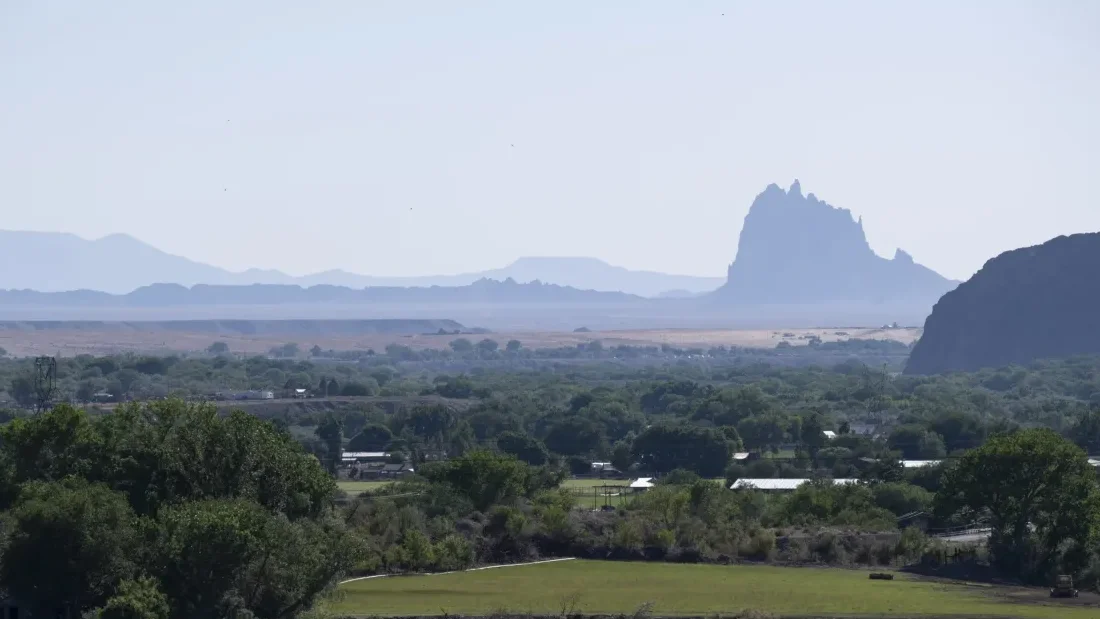
COAL: Unprecedented federal funding from the Bipartisan Infrastructure Law is helping Southwest Virginia diversify its economy through redevelopment of abandoned mine land sites. (Virginia Mercury)
CLIMATE: Austin, Texas’ city council considers asking voters to approve a climate bond to help pay for projects related to the city’s climate goals, but the mayor wants to delay the process until 2026. (KXAN)
ELECTRIC VEHICLES: Rivian reports that it sold more electric vehicles than it manufactured in the last quarter, during which the company also reiterated its plans to build a factory in Georgia. (Atlanta Journal-Constitution)
SOLAR:
OIL & GAS: Texas oil and gas regulators ask the state’s attorney general to sue the U.S. EPA over its decision to list the dunes sagebrush lizard as endangered. (E&E News, subscription)
UTILITIES: Entergy New Orleans promotes a new vice president of regulatory and public affairs who will lead the company’s engagement with the New Orleans City Council. (news release)
POLITICS: Florida Congressmember Anna Paulina Luna has invested hundreds of thousands of dollars into a political donor’s oil and gas company. (Tampa Bay Times)
COMMENTARY:
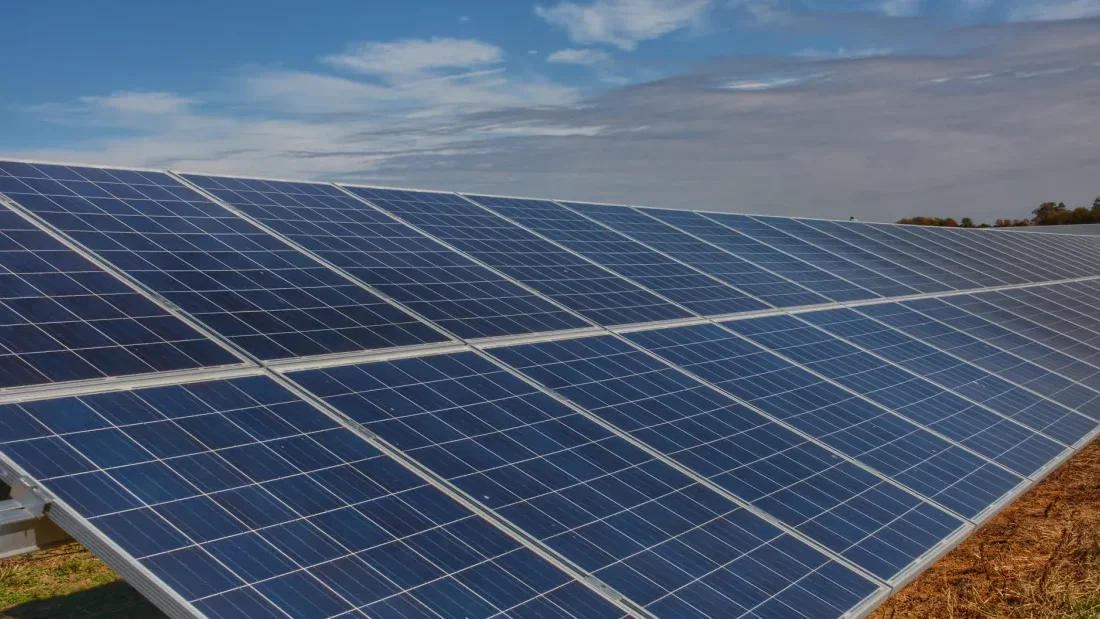
Solar developers are hoping that listening to local communities in Ohio early in the design stage will boost their chances for success before state regulators.
“We are really invested in and committed to being good neighbors,” said Lindsey Workman, community affairs manager for Vesper Energy. The company held three meet-and-greet sessions in Greene County this spring for its proposed Aviation Energy Center project, in addition to earlier meetings with trustees for several townships.
Another developer, Open Road Renewables, also hosted listening tour sessions this spring to learn about community issues and residents’ concerns related to its proposed Grange Solar project in Logan County. The meetings began at the end of April and ran through June.
The companies’ proactive community engagement approach comes as some Ohio solar projects have faced significant local opposition, often stoked by fossil fuel interests. State policy under a 2021 law known as Senate Bill 52 also has empowered anti-solar groups to ban many renewable energy projects or pressure local elected officials to oppose them.
“I think it will be a trend,” to seek community input early on, especially if it helps lessen local opposition, said Jane Harf, executive director for Green Energy Ohio, which counts multiple solar developers among its members. At the same time, “it’s really hard to quantify opposition,” Harf added. A minority of opponents can be much more vocal and apply more pressure to local officials than a majority of people who are supporters or just neutral.
“And [there] is a lot of organized opposition,” Harf said. “This isn’t just grassroots. This is being fed by national organizations.”
Open Road Renewables currently faces challenges from two opposition groups relating to its proposed Frasier Solar Project in Knox County. The Energy News Network has reported on links between speakers for one of the groups and pro-fossil fuel interests.
Vesper Energy faced opposition for its proposed Kingwood Solar project in Greene County, which led the the Ohio Power Siting Board to reject the company’s application based on substantial local opposition. The case is before the Ohio Supreme Court on appeal. The company argues, in essence, that the board’s legal responsibility to determine the public interest extends beyond assessing how popular a project appears to be locally based on the numbers of comments for and against it.
These companies hope that early, proactive outreach to the community can help smooth the paths for their latest projects before they begin the formal power siting board process.
“We’ve been putting a very heavy emphasis on public engagement and, more importantly, listening to concerns from as many stakeholders as we can in the community,” said Doug Herling, a vice president for Open Road Renewables.
Patricia Hicks heads Outcomes Management Group, a Columbus-based consulting firm, which helped run the listening sessions for Open Road Renewables. The team aimed to invite people representing a broad spectrum within the county.
“You want to make sure that you don’t just get one group of people providing information,” she said. “You don’t want to have a biased listening group.”
During the sessions, small groups were also asked both closed- and open-ended questions. Hicks’ firm is working now to finalize a report on the feedback, both positive and negative.
While companies say footprints for the Aviation Energy Center and Grange Solar projects have not yet been finalized, they say insights from the community input will help guide how those boundaries are determined.
Open Road Renewables plans to use the report from Hicks’ firm to develop a set of commitments to the community. Getting feedback earlier in the process can help the company tailor the project to deal with specific concerns, versus waiting to negotiate more permit conditions later, Herling said.
The final report from Outcomes Management Group will also help the company make the community concerns section of the project’s power siting board application more robust, Herling said. Hicks expects the work also will help the company in future communication efforts relating to the project.
Vesper Energy has already committed that the Aviation Energy Center project won’t border nonparticipating landowners’ properties on more than one side, Workman said. Setbacks from residential property lines, state parks and other public lands also will range from 300 to 500 feet, which is more than Ohio Power Siting Board rules require.
“We care about the feedback, and that’s what we heard,” Workman said.
Workman said Vesper Energy is willing to make similar commitments if it wins the Kingwood Solar case on appeal. She noted the company also has donated nearly $40,000 in the past year to support work in Greene County by various nonprofit groups, including the Ohio State Parks Foundation, Camp Clifton 4-H Camp, Yellow Springs Community Foundation, Family Promise of Greene County, and Greene County FISH Pantry.
“There’s no strings,” Workman said. “We’re trying to make sure that we become good neighbors.”
Such strategies are also bets that listening now can save headaches later.
Attendees and others have praised the companies’ approach, but it’s too soon to say how successful it will be.
Logan County Administrator David Henry didn’t attend the Grange Solar sessions in person and said he isn’t in a position to speak for or against the project. He added that new, non-grandfathered projects are banned for unincorporated areas of most of the county’s townships under SB 52. Nonetheless, Henry commended Open Road Renewables for holding the sessions about the proposed project.
“I will say that I’m glad that Open Road Renewables is allowing the public to have their input on it both positively and negatively — they’ve had plenty of both,” Henry said. “I think that’s a good idea on their part to let people have their voice heard.”
Members of the Greene County Board of Commissioners would not comment for this story due to ongoing litigation, said Ashley Schommer at the Greene County offices. The county is one of the intervenors against the Kingwood Solar project in Vesper Energy’s appeal.
“Vesper seems interested in listening to community feedback and seeing what it can do to be a cooperative business entity,” said Kate LeVesconte, a local resident who is part of a local pro-solar group. “I think that is a really good idea when it is interacting with legitimate concerns and not disinformation-driven fear.”
Unfortunately, LeVesconte added, she hears a lot of false information, such as claims about contamination, arguments about whether farmland can eventually be restored and more.
“We’re still facing an uphill battle regarding this relatively conservative area feeling that solar farms are probably not good for prime agricultural land,” she said.
Real estate agent Chris Blosser, who attended one of the four listening sessions Open Road Renewables hosted in Logan County, said the company “is doing everything right, and they’re covering all their bases. They’re doing things to address people’s concerns.”
She gave the example of the company committing to provide an upfront bond to restore the property at the end of the project’s lifespan.
“Unfortunately, there’s quite an organized effort to fight this installation,” Blosser said. Others at the listening session she attended had already gone to some anti-solar meetings. “And they had information that had been spoon-fed to them.”
A large percentage of people who attended the Open Road Renewables sessions or answered its online survey said they got their news from social media, Hicks said. As a result, many were relying on information that hadn’t been verified.
At the same time, many people at the meetings did want to ask questions, she noted. And if people were able to remain open-minded, they could see potential benefits from the project, Hicks said. Beyond asking about concerns, attendees were asked how they would want to see company payments used in the community. The responses included new insights for the company to consider.
“Listening brings all kinds of interesting discoveries,” Hicks said.
Meanwhile, opponents of utility-scale solar projects have been hosting their own meetings to stir up discontent.
For example, Citizens for Greene Acres is an opponent of Vesper Energy in the Kingwood Solar case, and most of its activities so far have focused on that project.
And in Logan County, a group called Indian Lake Against Industrial Solar has mobilized to oppose Open Road Renewables’ Grange Solar project. The county has already had experience with two other anti-solar groups opposing the proposed Fountain Point solar farm: No Solar in Logan County and Citizens against Fountain Point.
“Developers in the solar industry earn trust in communities by communicating proactively with interested parties and addressing questions posed by community members,” said Will Hinman, executive director for the Utility Scale Solar Energy Coalition of Ohio. Conversations start before applications are filed and continue throughout projects’ siting, construction and operational phases.
For now, Vesper Energy and Open Road Renewables hope their efforts and planned follow-up will lay the groundwork for that trust.
Grange Solar and the Aviation Energy Center are both in the early stages. Both developers’ efforts come before two public information meetings they will need to hold before filing formal applications for the projects. The updated Ohio Power Siting Board rule took effect on May 30.
Open Road Renewables plans to submit its application sometime in September, Herling said. The company expects it might then get a decision from the Ohio Power Siting Board by the end of next year.
Vesper Energy doesn’t have a definitive timeline yet for the Aviation Energy Center or the Kingwood Solar project. “This commitment to community collaboration is our guiding principle,” Workman said. “Our goal is to get it right, however long that takes.”
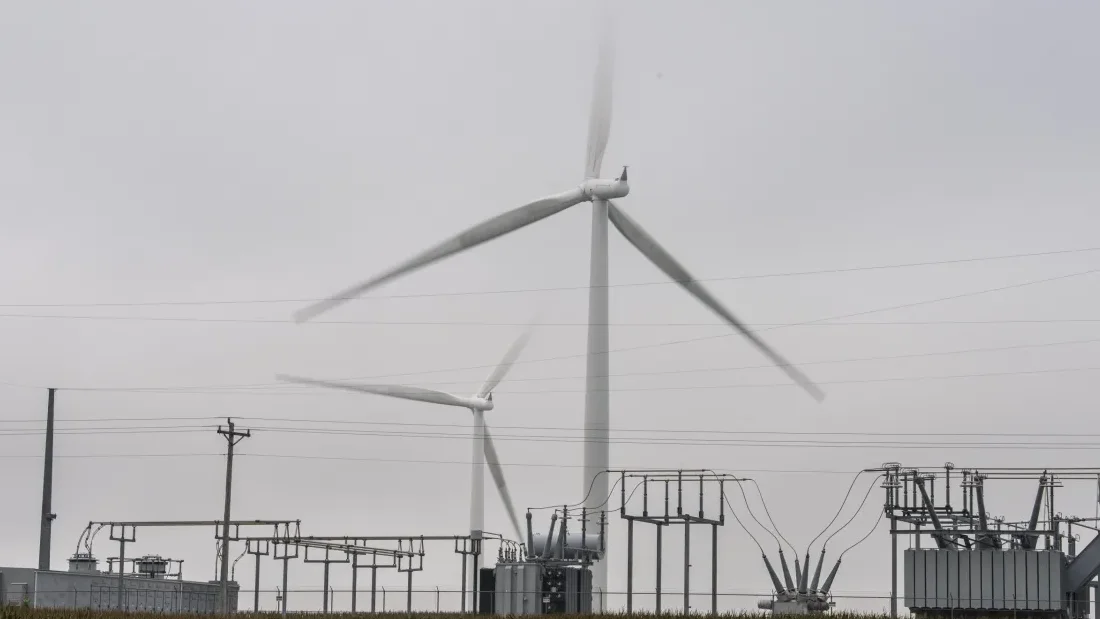
WIND: The 924 MW Sunrise Wind project receives final approval from federal ocean energy officials to be built off the Long Island coast. (news release)
ALSO:
FOSSIL FUELS:
COURTS: Maine’s attorney general seeks to dismiss a lawsuit from youth and environmental advocates claiming officials have failed to follow the state’s 2019 carbon emissions reduction law. (Maine Morning Star)
SOLAR:
TRANSIT: A number of state lawmakers who oppose the now-indefinitely paused Manhattan traffic congestion tolling program weren’t able to provide an alternative plan for funding New York City’s transit agency. (New York Focus)
FINANCE: Federal energy officials issue $45 million in grants to Washington, D.C., Pennsylvania and Vermont, among other states, to form energy efficiency revolving loan funds to reduce the cost of clean energy projects. (news release)
ELECTRIC VEHICLES: New Haven, Connecticut, will kick off a new short-term e-bike rental program later this summer, although details haven’t been finalized yet. (New Haven Independent)
WORKFORCE: A western Massachusetts community college receives an over $832,000 state grant to boost its programming for electric vehicle charging station installation, energy auditing, solar installation and other green jobs. (Daily Hampshire Gazette)
UTILITIES: An open at-large seat on the Delaware Electric Cooperative’s board attracts five candidates; the election will be held in August. (news release)